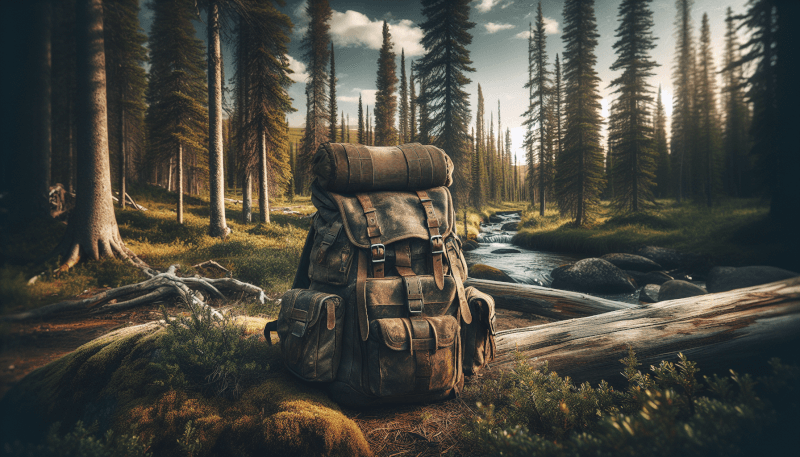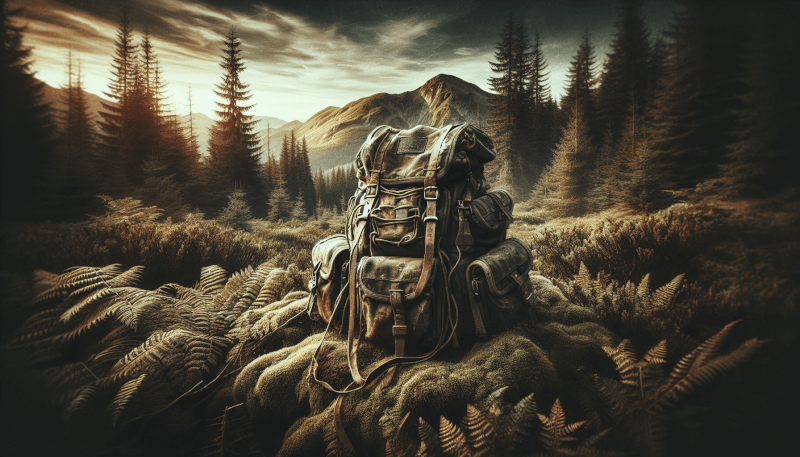Imagine embarking on an exhilarating journey into the great outdoors, where the weights of everyday life melt away and you find yourself immersed in the beauty of nature. In this article, we will transport you into the heart of thrilling camping adventures, where survival skills and determination play a vital role in facing the unpredictable elements. From conquering treacherous terrains to weathering stormy nights under the stars, join us as we share captivating stories of how individuals triumphantly emerged from the challenges of nature’s raw power. Get ready to be inspired by these camping adventure stories that demonstrate the indomitable spirit of human resilience and ignite your own longing to escape into the wilderness.

Choosing the Right Campsite
When it comes to camping, choosing the right campsite is crucial for a successful and enjoyable trip. One of the first factors to consider is the climate and terrain of the area you plan to camp in. Are you heading to a hot and dry desert or a cool and mountainous region? Understanding the climate will help you determine what type of camping gear and clothing to pack. Furthermore, familiarize yourself with the terrain. Is it rocky and rugged or flat and grassy? Knowing the terrain can help you decide the best location to set up your tent, ensuring a comfortable and level sleeping area.
Another important aspect to consider when selecting a campsite is the availability of amenities and facilities. If you prefer a more primitive camping experience, you may want to find a site that is off the beaten path and lacks amenities such as running water and flush toilets. On the other hand, if you enjoy a bit of comfort while camping, look for campsites that offer amenities like showers, picnic tables, and even electrical hook-ups. Choosing a campsite with the right amenities can greatly enhance your camping experience and make your stay more convenient and enjoyable.
Safety should always be a top priority when choosing a campsite. Look for campsites that have safety measures in place, such as fire rings or pits to contain campfires and keep them away from tents and other flammable materials. Additionally, check for any potential hazards in the surrounding area, such as poisonous plants or steep cliffs. It’s also a good idea to consider the proximity of the campsite to emergency services or medical facilities in case of any emergencies. By taking safety into consideration when choosing a campsite, you can ensure a secure and worry-free camping experience.
Creating the Perfect Campfire
No camping trip is complete without a cozy campfire to gather around. Before you can enjoy the warmth and ambiance of a campfire, it’s important to gather firewood and kindling. Look for dead or fallen branches that are dry and easily breakable. Avoid taking wood from live trees or cutting down branches, as this can harm the environment. Collecting firewood responsibly will minimize your impact on the natural surroundings and preserve the beauty of the campsite for future campers.
Building a proper fire pit is essential for a safe and efficient campfire. Clear away any debris or flammable materials from the designated fire pit area. Create a fire ring using rocks or a metal fire ring, if available. This will help contain the fire and prevent it from spreading. Arrange your firewood in a teepee or log cabin style, allowing for ample ventilation and airflow. Place kindling and fire starters, such as dry leaves or newspaper, in the center of the structure to ignite the fire. Once the fire is burning steadily, you can add larger pieces of firewood to keep it going.
While enjoying your campfire, it’s crucial to understand and practice fire safety. Keep a bucket of water or a fire extinguisher nearby in case the fire gets out of control. Never leave a campfire unattended, and always fully extinguish it before leaving or going to sleep. Pour water over the fire, making sure to douse all the embers until there is no smoke or heat remaining. By following these tips, you can create a perfect campfire that provides warmth, light, and a wonderful camping experience.

Preparing Essential Camping Gear
Having the right camping gear is essential for a comfortable and enjoyable camping experience. One of the most important items is your tent. When choosing a tent, consider factors such as size, weight, and durability. If you’re camping with a group, make sure the tent has enough space for everyone to sleep comfortably. Additionally, check the weight of the tent if you plan on backpacking, as a lightweight and compact tent will be easier to carry. Lastly, opt for a tent made from durable materials that can withstand various weather conditions.
Sleeping bags and sleeping pads are essential for a good night’s sleep in the great outdoors. Choose a sleeping bag that is suitable for the expected temperature range of your camping destination. Look for features like insulation, draft tubes, and hoods to ensure maximum warmth and comfort. Don’t forget to bring a sleeping pad to provide insulation from the cold ground and add cushioning for a more comfortable sleep. Sleeping pads come in various thicknesses and materials, so choose one that suits your preferences and needs.
Cooking and food storage equipment is another crucial aspect of camping gear. A portable camping stove or grill is essential for preparing meals in the outdoors. Look for models that are lightweight and easy to set up. Additionally, consider the type of fuel required and its availability in the camping area. Food storage containers, coolers, and utensils are also essential for keeping your food safe and organized. Choose storage containers that are durable and watertight to protect your food from wildlife and the elements.
Staying Hydrated and Nourished
Proper hydration and nutrition are vital for a successful camping trip. When heading to a campsite, always pack a sufficient water supply. Drinking water sources might not be readily available or safe, so it’s essential to bring your own. Calculate the amount of water needed per person per day and pack accordingly. Consider factors like the climate, activities planned, and available amenities when determining the amount of water required.
Choosing nutritious food options will help keep you fueled and energized during your camping adventure. Pack a variety of non-perishable foods that are easy to prepare and require minimal cooking. Fresh fruits and vegetables, granola bars, nuts, and canned goods are some excellent options. Opt for foods that provide a good balance of carbohydrates, proteins, and healthy fats. Don’t forget to pack cooking essentials such as oil, spices, and utensils to make your meals taste even better.
Proper food storage and preparation are crucial to prevent spoilage and contamination. Use airtight containers or resealable bags to keep your food fresh and protected from wildlife. Always store food away from your sleeping area to avoid attracting animals. When cooking, follow proper food handling and sanitation practices to prevent foodborne illnesses. Clean utensils and surfaces thoroughly, and make sure to cook food to the appropriate temperature. By prioritizing hydration and nourishment, you can enjoy your camping adventure to the fullest.

Navigating Trails and Landscapes
Exploring trails and landscapes is one of the highlights of camping. To ensure a smooth and enjoyable experience, it’s important to understand trail markers. Trail markers are typically used to indicate the direction of the trail and provide information about its difficulty level. Look for signs, blazes on trees, or cairns (stacks of rocks) that guide you along the trail. Familiarize yourself with the different trail markers commonly used in the area you’re camping in to avoid getting lost and to make the most of your hiking adventures.
Using maps and compasses is crucial for navigation in the wilderness. Before setting out on a hike, obtain a map of the trail or area you plan to explore. Study the map and identify landmarks or notable features that will help you navigate. Bring a compass and learn how to use it to determine your direction. By combining map reading skills with compass navigation, you can confidently navigate the trails and landscapes, even in unfamiliar terrain.
Natural landmarks and navigation techniques are also valuable tools for finding your way while camping. Look for distinctive landmarks such as mountains, rivers, or rock formations that can serve as reference points. Pay attention to the position of the sun, moon, or stars to determine your direction if you don’t have a compass. Learning basic navigation techniques like reading the shadows cast by the sun can help you orient yourself and stay on track. Embrace the beauty of nature while staying safe and on course.
Dealing with Wildlife Encounters
Interacting with wildlife can be an exciting and memorable part of camping, but it’s important to approach these encounters with caution and respect. Educating yourself about local wildlife is the first step in ensuring a safe and responsible interaction. Learn about the species that inhabit the area and their behavior patterns. Understand which animals may pose a threat and how to respond if you encounter them. Respect the wildlife’s natural habitat and observe from a safe distance.
Proper food storage is crucial in order to avoid attracting animals to your campsite. Keep all food and scented items securely stored in bear-resistant containers or hung from trees away from your sleeping area. Avoid cooking or eating near your tent, as the smell of food can lure wildlife. Dispose of food waste properly, following Leave No Trace principles. By properly managing your food and waste, you can reduce the risk of wildlife encounters and keep both yourself and the animals safe.
In the event of a wildlife encounter, it’s important to remain calm and take appropriate safety precautions. Do not approach or attempt to feed the animal. Instead, make yourself appear larger by standing tall and spreading your arms or jacket. Make noise by shouting or clapping your hands to deter the animal. Back away slowly, without turning your back to the animal, and give them space to retreat. Always prioritize your safety and the well-being of the wildlife during these encounters.

Handling Extreme Weather Conditions
Camping often exposes us to various weather conditions, and being prepared for extreme weather is essential for your safety and comfort. When facing heat, it’s crucial to protect yourself from sunburns and dehydration. Wear sunscreen, a hat, and lightweight, breathable clothing to shield yourself from the sun’s harmful rays. Stay hydrated by drinking plenty of water and replenishing electrolytes with sports drinks or electrolyte supplements. Take breaks in shaded areas and avoid strenuous activities during the hottest parts of the day.
Rain and storms can also be a challenge while camping. Prepare for rain by bringing waterproof clothing, tarps, and a properly sealed tent. Make sure your tent is elevated on a waterproof groundsheet or tarp to prevent water from seeping through. Secure your belongings in waterproof bags or containers to keep them dry. Stay inside your tent during thunderstorms and avoid touching any metal objects. By being prepared and taking necessary precautions, you can stay dry and comfortable even in wet weather.
Surviving in cold and snowy conditions requires careful planning and preparation. Layer your clothing to trap heat and insulate your body. Wear waterproof and insulated boots to keep your feet warm and dry. Bring extra blankets or sleeping bags rated for cold temperatures to stay comfortable during the night. Create a barrier between you and the cold ground by using foam or insulated sleeping pads. Avoid sweating excessively by regulating your body temperature through ventilation and removing layers as needed. By preparing for extreme weather conditions, you can ensure your safety and enjoy your camping experience, no matter what nature throws at you.
First Aid and Emergency Preparedness
Being prepared for any emergency situation is essential when camping in the wilderness. One of the first things you should do is create a custom first aid kit tailored to your specific needs. Include essentials such as bandages, antiseptic wipes, pain relievers, and any necessary prescription medications. Familiarize yourself with how to use each item in your first aid kit and make sure they are all in good condition and not expired.
Basic first aid techniques can make a significant difference in a medical emergency. Take the time to learn and practice important skills such as CPR, treating minor wounds, and immobilizing fractures. Knowing what to do in critical situations can potentially save lives. Consider taking a wilderness first aid course or obtaining certification in basic life support to enhance your first aid knowledge and skills.
Emergency communication and rescue signals are crucial for getting help when needed. Before your camping trip, inform someone reliable about your planned itinerary, including your expected return date. Bring a fully charged cell phone or a satellite phone if you’re venturing into areas with limited or no cell service. Learn how to communicate distress signals such as whistle blasts, flashlight signals, or building signal fires. By being prepared and knowing how to communicate effectively, you can increase your chances of getting the help you need in case of an emergency.

Managing Campsite Waste and Cleanliness
Keeping a campsite clean and minimizing waste is not only important for the environment but also for the overall camping experience. Embrace the “pack in, pack out” philosophy, which means you should take all your trash and waste with you when you leave the campsite. Bring garbage bags and designate separate ones for recyclables and non-recyclables. Dispose of your waste properly at designated collection points or bring it back home for disposal. Leave the campsite cleaner than you found it to preserve the natural beauty for future campers.
Proper disposal of human waste is essential to prevent contamination and maintain hygiene in the wilderness. If there are no established restroom facilities, follow the principles of Leave No Trace. Dig a small hole at least 6-8 inches deep and 200 feet away from any water source or trail. After use, cover the hole with soil and pack out any toilet paper or hygiene products. Practice good hand hygiene by using hand sanitizer or washing your hands with biodegradable soap and water.
Campsite cleaning goes beyond waste management. Always clean up after yourself and maintain a tidy camping area. Store all camping gear, food, and personal items securely to prevent animals from accessing them. Keep your tent and sleeping area clean by shaking out dirt and debris, and wiping down any surfaces with a damp cloth if necessary. When cooking, wash utensils and dishes promptly and dispose of water away from the campsite to avoid attracting wildlife. By practicing good campsite cleanliness, you can leave a positive impact and show respect for the natural environment.
Campfire Cooking Tips and Recipes
Cooking delicious meals over a campfire is one of the highlights of camping. Choosing the right cooking methods is crucial to make the most of your outdoor kitchen. Depending on your camping style and available resources, you can choose from various methods such as grilling, stewing, or roasting. Experiment with different techniques to discover what works best for you and your camping companions.
Having a repertoire of camping recipes allows you to enjoy tasty meals even in the wilderness. From hearty breakfasts to savory dinners and indulgent desserts, there’s a wide range of recipes that can be adapted for outdoor cooking. Prepare make-ahead meals or pre-cut ingredients to simplify the cooking process at the campsite. Don’t forget to bring essential cooking tools like cast-iron pans, tongs, and aluminum foil to assist in your culinary adventures. Explore creative and delicious camping recipes that cater to your taste preferences and dietary restrictions.
Kitchen hacks and tips can elevate your campfire cooking experience. For example, lining your pots and pans with aluminum foil can make cleaning up a breeze. Utilize natural resources like flat rocks or fallen branches as improvised cooking surfaces. Investing in a portable grill grate or a Dutch oven can open up a world of possibilities for outdoor cooking. With a little creativity and resourcefulness, you can enjoy satisfying and flavorful meals even when you’re miles away from a traditional kitchen.
In conclusion, camping is an incredible way to connect with nature, create unforgettable memories, and recharge your soul. By choosing the right campsite, creating a perfect campfire, preparing essential camping gear, staying hydrated and nourished, navigating trails and landscapes, dealing with wildlife encounters, handling extreme weather conditions, being prepared for emergencies, managing campsite waste and cleanliness, and exploring campfire cooking tips and recipes, you can have a safe, enjoyable, and fulfilling camping adventure. So, pack your gear, embrace the beauty of the great outdoors, and embark on an unforgettable camping journey!


